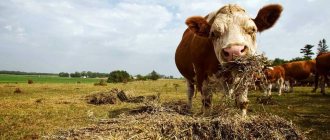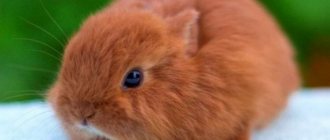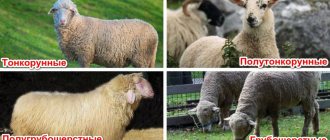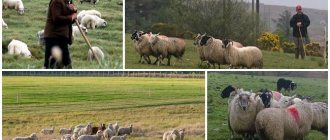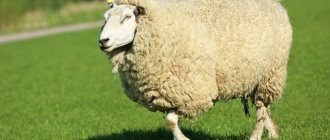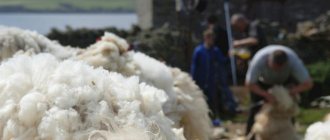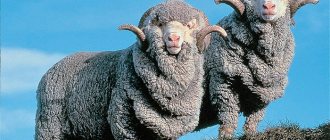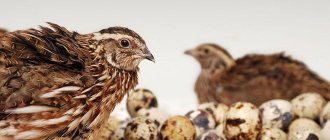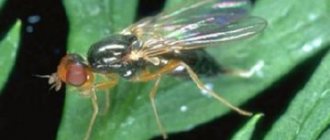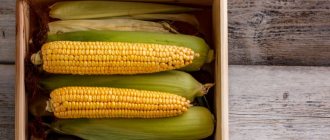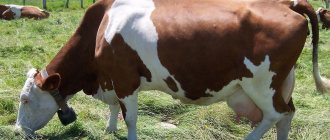Winter feeding and breeding of sheep, unlike summer, has a number of its own characteristics. For this reason, you need to know in advance what sheep eat in winter. Just don’t think that in winter you won’t have to watch, care for and feed the rams. On the contrary, it will add more hassle. Rams, although submissive animals and unpretentious to food, can still greatly reduce their level of productivity and, even worse, get sick due to improper feeding in winter and a poorly selected diet.
Important! The main winter food for sheep is considered to be high-quality, mixed-grass hay with the addition of concentrated feed to the diet, no more than 30% of the total feeding mass. The best concentrated food for sheep in winter is considered to be granular food. What does high-quality hay mean in our understanding? Do you know? First of all, this means cutting the grass, proper drying and conditioning, and normal humidity. The best time for making mixed-grass hay is when the grass enters the heading and harvesting period. For leguminous grasses, this period begins with the beginning of flowering and the budding phase.
What do sheep eat in winter?
Preparatory activities
The first stage of work includes the preparation of the required volume of high-quality feed. First of all, this is dry hay and straw, silage and root crops. All of the listed feeds are the basis of nutrition for sheep during the winter.
At the same time, it is necessary to prepare such activities as:
- arrangement of premises for a sheepfold with the presence of feeders for dry grass and mixed food;
- additional feeding of sheep;
- carrying out diagnostic examination of livestock;
- implementation of deworming activities;
- prevention of scabies.
The mechanization of heavy work also plays a major role, thanks to which it is possible to move livestock to a specially equipped room in a short time.
Arrangement of the premises
The sheep shed needs to be insulated. It is necessary to ensure that it maintains a temperature range of 10 to 14 degrees Celsius. It is important to ventilate the sheepfold, and therefore the windows should be opened fully or partially. It is recommended to use straw as bedding.
Keeping your sheep shed clean is a guarantee of animal health. Manure should be promptly cleared from the sheepfold. Improper cleaning leads to musty air in the room. In addition, when the fleece is contaminated, the likelihood of developing diseases increases.
Large farms use mechanized harvesting. To infuse manure, farmers make a homemade storage facility. At warm temperatures, manure is stored in it for at least 5 months. After this time, the infused manure is used as fertilizer.
Next to the barn they make a pen where sheep are walked. During a walk, animals' appetite improves, so they consume food in large quantities. For this purpose, special feeders are made in the pen. To keep the food from freezing, the sheep receive it only inside the sheepfold.
Sheep diet in winter
Feeding in the cold season is carried out at least 3 times throughout the day. In the morning, sheep are fed with roughage, at lunchtime - with succulent feed, and in the evening, the animals are given concentrates.
During the winter, one sheep requires a certain supply of food, namely:
- roughage - 500 kg (hay - from 200-250 kg and silage - from 350-500 kg);
- concentrates - 20-25 kg;
- root vegetables - 100 kg.
The most important food is hay and silage. Sometimes crushed and steamed straw is added to sheep. The livestock is given warm water after each meal at the rate of 7 liters per day for each ram or ewe.
Important! In addition to the main feed, sheep must be provided with a complex of vitamins and minerals in winter. Such supplements make up for the deficiency of herbal food that animals receive as their main diet in the summer.
Among the popular additives used in sheep farming, feed chalk, bone meal, salt filucene, feed sulfur, iodized salt and yeast are in great demand. If sheep receive adequate nutrition, balanced with all vitamins, there is no need to take supplements.
Mineral supplements for sheep in winter
Chalk, bone meal, table salt - all this should be included in the winter diet of sheep. For each individual, these supplements are calculated individually, depending on the sex of the animal, its physical condition and age. In specialized stores for animals you can always buy lick salt, which also contains vitamins and essential enriched minerals. A lack of salt, especially in winter, in the body of sheep can be easily identified by determining their behavior. When there is a lack of salt, sheep, as a rule, begin to lick the hands of the cattleman, licking off the salty sweat from them. Most newcomers to this business think that licking hands is a simple form of love for their owner. Now you know too.
Important! Mineral substances missing in the body will have a negative impact on the health of rams, reducing and slowing down the growth of the younger generation, reducing animal productivity and even loss of appetite and hair loss.
Mineral supplements
An important supplement for sheep in winter is calcium. Approximately 99% of sheep bones consist of it. The main sources of calcium in winter will be milk and meat and bone meal. Mineral additives include dolomite flour.
- In winter, up to 15 grams should be given per head of ram. chalk is for adult sheep, the same amount of bone and dolomite meal. You can pour these additives directly into the feeders. For the younger generation up to 8 grams, and for the smallest lambs up to 5 grams.
Special care for lambs
By the end of the stall period, sheep bear offspring. Before giving birth, the owner must especially carefully monitor the condition of the animal. 7 days before the birth of small lambs, mating queens should be sent to another room. The temperature in it should vary in the range of 15-17 degrees. Sheep must be carefully fattened, thereby ensuring preparation before giving birth.
Lambs born in the winter season require trivitamin vaccination. A week after birth, they should be taken out for a walk. The main food for young animals in the first two weeks of life is sheep's milk. Later, the owner adds new high-quality products to the lambs’ menu, and does this gradually. For small lambs, it is necessary to make small feeding troughs and place chopped legume hay in them.
Suckling queens need to be fed with succulent feed, such as silage and root vegetables. Fodder beets will be an excellent food for them at this time. A sheep can eat up to 5 kg of such food per day. Before feeding, beets are sprinkled with finely chopped oats or salt containing iodine. Lack of food causes a decrease in milk volume and leads to illness in the animal.
Juicy feed for sheep in winter
- Silage. This feed is very important in winter, as it contains many nutrients and beneficial substances for rams. In winter, rams, eating silage, significantly increase their productivity: weight (meat) becomes greater, and milk productivity also improves. One ram needs up to 4 kg per day in winter. This food can be mixed with any solid food.
Juicy feed: silage and all melons
- Melons and root crops. This food in winter is distinguished not only by its usefulness, but is also in great demand among small-horned livestock. The favorite delicacy of rams in winter are: fodder types of beets, carrots, pumpkins, and zucchini. All these vegetables have a huge content of vitamins and a high percentage of fiber. All this has a beneficial effect on the growth of rams. These feeds are required in winter for all pregnant females, as well as for sheep when feeding lambs. These crops improve the production of milk volumes and affect the quality of wool.
Required volume of hay for sheep for the winter
Experienced sheep farmers know that fine-wool sheep can survive the entire winter months only on spring straw. Moreover, if you add about 400 grams of hay per day, the animals will definitely gain weight. This means that roughage is considered the most suitable for feeding wool sheep, and should be considered as the main one during the winter.
It has been proven that it is hay that ensures the wool productivity of sheep. Moreover, it cannot be replaced with other food. Sheep consuming hay and any concentrated feed produce large volumes of soft wool.
If we talk about the volume of roughage needed to maintain the suitable productivity of the female, the owner should feed the sheep with hay in the amount of 1/30 of its weight during the day.
The volume of hay will be determined based on its composition and beneficial properties, as well as the type of sheep. Rams and lambs should be fattened better than ewes or meat sheep.
The starting amount of dry herb consumption by Romanov sheep has been established (per day):
- pregnant queens - 0.5-0.7 kg, lactating queens - 0.8-1.0 kg;
- rams - 1.0-1.3 kg;
- lambs - 0.4-0.5 kg.
If the volume of hay harvested for the winter period is not enough, its deficiency can easily be compensated for by straw. As a supplement to the main diet, straw should be given to animals in the amount of 0.5-1.5 kg per animal per day. To ensure the best quality of straw, it should be brewed and yeasted.
Main types of feed for sheep
Sheep food can be quite varied. The diet must be properly balanced. To do this, combine in certain proportions:
Juicy feed
Serve for fattening masses. The basis of the diet of sheep and rams is:
- Grass . Both succulent sprouts and coarse forbs are suitable. Animals eat weeds, thorns, even young branches of bushes or trees. Fresh greens are very nutritious until mid-summer. What to feed sheep when the grass loses most of its properties - during this period, complementary feeding with shoots is introduced. Corn, oats or rye are suitable. You can use shoots of winter wheat or legumes.
- Vegetables . Root vegetables are rich not only in vitamins, but also in fiber. The most commonly used are beetroot and carrots. They improve intestinal function and also increase resistance to infections.
- Silo . This food is very nutritious. Corn hay is often mixed with legume hay or roughage.
- Melons . Zucchini and pumpkin are rich in beneficial microelements.
Juicy food suitable for all seasons. It must be of high quality
Roughage
What to feed sheep at home - roughage is preferable in winter. To prepare a stall ration, use:
- Hay . Various grasses during the flowering period, as well as alfalfa, clover, and peas are considered to be of the highest quality for harvesting. They are rich in nutrients and beneficial microelements. For an adult, the daily norm is 2-4 kg.
- Haylage . Mow the grass and dry it until it loses half of its initial moisture level. Then it is canned.
- Straw . It does not belong to the main feed. If there is a need to add it to the diet, then it is worth considering the restrictions. Barley, oat or bean straw should not exceed 2.6 kg for adults, 1 kg for young animals.
Rough food contains too much fiber. Excessive feeding of rams threatens digestive problems. At the same time, the nutritional properties of such food are much inferior to succulent feed.
Concentrated feed
Compound feed and concentrate are some of the best for feeding sheep. The mixtures are made up of:
- Wheat.
- Barley.
- Oats.
- Cake.
- Bobovykh.
- Bran.
- Corn.
Wheat bran and other additives make your diet richer. You can’t do without proteins, fats, starch. They are added to food with the following calculations:
- 100-150 gr. for sheep.
- 600 gr. for rams.
Animals also need mineral supplements:
- Salt.
- Chalk.
- Bone flour.
The amount of vitamins and minerals per head of the herd is calculated individually. Age, gender, family history and other factors must be taken into account
What determines wool weight gain?
The studies have made it clear that excess feed consumed increases the weight of the sheep and the volume of sweat secretions in the wool, but has virtually no effect on the increase in the weight of sheep wool.
The experiment was carried out with the participation of two females. One sheep was given grain and hay to eat, and the other was given only hay. The increase in live weight was 17 kg in the first sheep and 9 kg in the second. The increase in pure wool in sheep was similar - 880 and 1000 g.
Hair growth will not decrease even when the female reduces her natural weight. With insufficient nutrition, as a result of which sheep lose weight, not only the amount of sweat produced is reduced, but also the amount of sheep wool. From previous tests, it became clear that the volume of fleece with improper nutrition and significant weight loss becomes 20% less.
If the sale of castrated rams is the main source of income for a sheep farmer, then it should be taken into account that the animal’s weight loss in winter cannot be compensated for in the meadows. This means that the sheep farmer will suffer a heavy loss.
Any experienced sheep breeder should know that larger sheep eat less food relative to their live weight. At the same time, they can eat any food and grow more actively than small sheep breeds.
You can buy feed, compound feed and feed additives from us:
Sheep feed
Feed and feed
Feed additives
Approximate rations for feeding sheep of various breeds
Arrangement of feeders
To ensure comfortable living conditions for the flock during the winter season, it is necessary to build a double-sided nursery in the walking area 2-3 months before the onset of cold weather. One compartment will be for concentrates and the other for dry hay. Divided feeders include the main components, namely:
- nursery;
- pan;
- gutter
The manger is used to place dry herbs in them. The manger has legs, between which there is a wooden bottom, a groove and lattice structures. The gratings are made at an angle inward so that there is a gap of about 10 cm between them.
A rack and a chute are necessary for concentrated types of food. Externally, the pan looks like an oval-shaped container located on legs. In order for the cubs to easily get food from the pan, its height should be no more than 120 mm. The gutter looks like a regular trough located on the floor. Its depth should be no more than 12 cm, and its length should be approximately 3 m.
Don't forget about installing water containers. All devices used for eating and drinking should be convenient, as they may need to be moved to another location. During severe cold weather, it is forbidden to keep sheep outside or give them food and water. Sheep farmers must use warm water for watering. Feeders must be filled to ensure that each animal is well fed.
Quality hay
The most important feed for sheep during cold periods is mixed-grass hay. It must be of good quality.
Initially, hay needs to be collected from the meadow in a timely manner. The mowing of cereal grasses occurs during the period of the plant emerging into the tube and its heading. Leguminous plants should be mowed at the onset of the bud formation phase and at the beginning of color development.
Excellent quality hay can be obtained by following the harvesting process. In the process, sheep farmers use windrow tedding and drying. To ensure that the stems and leaves dry at the same time, the stem is flattened. The moisture content of quality hay should be 17-19%. In order for hay to be well preserved, it is customary to harvest it in bales or rolls. When preparing hay, you must ensure that it does not get wet and remains green. Hay contains the required amount of carotene and vitamin D.
It should be noted that hay is considered the main source of sugar in the diet of sheep breeds in winter. If the hay was prepared in a timely manner and in compliance with the necessary rules, its composition will include up to 12-15% sugars. Large peasant farms engaged in sheep breeding, in addition to hay, harvest other types of grass.
What do sheep eat in winter?
Breeds of odorless meat sheep are very fond of high-quality mixed-grass hay in winter, which must be prepared in accordance with all the rules and standards of technology, at the time of tedding the grass shafts and drying it. The flattening of the stem of high-quality hay occurs along with the drying of the grass leaves at the same time.
The moisture content of quality hay should not be more than 20%. The norm is considered to be a limit of 17 to 19%. The best option for storing hay in the summer is bales or rolls. By the way, when asking yourself the question of what sheep eat in winter, you should know how much hay a sheep needs for the winter . This article discusses in detail the number of bales for the winter and the number in rolls for the winter per head.
Hay and straw
When harvesting mixed-grass hay in the summer, be sure to take into account the natural factor - rain. Under no circumstances should moisture get on high-quality hay. High-quality hay must retain a greenish tint. Such hay in winter contains a lot of vitamin D and nutritious carotene.
Important! Please note that in winter hay will be the main source of feed containing sugar. It is sugar that should be included in the diet of sheep in winter. If hay is prepared in the summer in compliance with all the recommendations described above, then it should contain up to 15% sugar. This is enough to provide the sheep with the necessary amount of easily digestible carbohydrates in winter.
Only high-quality hay is the basis for winter feeding.
In large sheep farms, in addition to hay, silage and haylage are also prepared for the winter. It is best if the first one is prepared from legumes mixed with cereals - annual and perennial herbs.
Important! In winter, you also need to give your rams mineral nutrition. In addition, they must always be provided with a regular and uninterrupted supply of water. In winter, it is best for sheep to drink warm water. As additional supplements, the ram can be fed vitamin supplements for prevention. In small households, food from deciduous trees, twig food, and food from coniferous tree branches - spruce branches - will not be superfluous.
Feed for sheep and rams
The question of how much feed to feed sheep is important. Some sheep farmers are trying to reduce the cost of purchasing feed for the time when the animal is in the stall. They think that the animals will make up for the volume of useful products lost during the winter in the meadow. However, it is worth noting that simultaneously with the weight loss, there is a low quality of the fleece.
Otherwise, the livestock may die due to insufficient feeding. Many diseases develop without symptoms when the herd is well fed, but are a scourge for breeds with weakened immune systems. This is especially dangerous for animals infected with any types of parasitic diseases.
Juicy feed
Among root vegetables, sheep love to eat carrots or sugar beets. In the best case, animals should receive such food every day in winter. The required amount of sugar root vegetables for a mature sheep or ram is up to 4-5 kg per day. By receiving carrots as food, the animal’s body is saturated with vitamins. This food will be useful for pregnant and lactating queens.
In addition to the specified nutrition, sheep love potatoes, raw and boiled. Normally, the animal should receive this vegetable in a volume of 1-2 kg, based on the live weight of the sheep.
In addition to the previously mentioned vegetables, sheep can be given pumpkin, rutabaga, turnips and more as food. In 24 hours, the animal can receive no more than 3-4 kg of this food.
Grain and feed
Compound feed is considered the best concentrate for sheep. However, not every sheep farmer can afford to feed the herd with such feed due to its high price. The way out of this situation is to replace feed with grain or flour.
The most suitable grain feeds are considered to be crops such as barley or oats. The norm for mature sheep is 0.3-0.5 kg. It is allowed to increase the rate in the case of feeding pregnant ewes and breeding rams.
Important! Oats are considered the most suitable feed for young lambs and rams. Cubs need to be given 300-400 g of oats per day, and rams - up to 1 kg. If the specified nutritional standards are observed, the immunity of animals is maintained.
Rough dry feed and feed additives
Concentrated feed. This category of feed includes barley grain, wheat, corn, cake, as well as bran and peas. Roughage in this category has a high percentage of minerals, protein and fat. All this is very important in winter for the productivity of the sheep herd. Of all this, the favorite treats of concentrated feed are: cake and corn grain.
Straw. It is a low-nutrient feed additive in winter; for this reason, in winter during the period of stalling it will be a good feed for rams. The best straw is considered to be straw made from oatmeal, barley and legumes. In winter, a young sheep can consume up to 1 kg per day. straw, but adults up to 3 kg. Spring straw is considered the most useful and nutritious straw in winter; it is much better than winter straw in terms of nutritional characteristics. We would not recommend that you give straw to breeding rams and growing young animals. It is best if you can chop the straw in winter and then steam it with the addition of concentrated feed, root vegetables and pulp.
Concentrated feed, granulated
Feed additives. Presented in the form of complete mineral mixtures. This winter is a vital delicacy for sheep. Mineral supplements contain: salt, as well as Se, Ca and P. If this purchase is not possible in finished form, then all these components can be extracted from sodium phosphate, bone meal, dicalcium phosphate, dried seaweed and alfalfa meal.
Hygiene in the sheepfold in winter
The inside of the pen where the sheep spend time during the winter needs to be kept clean. To achieve this, sheep farmers collect manure every day. If this is not done, the air will be polluted with hydrogen sulfide fumes that are harmful to the animal’s body.
It is necessary to promptly change the material serving as bedding. This is done because the old bedding quickly becomes damp and absorbs urine. In large farms, harvesting is carried out using an automated method. Urea, which accumulates in the existing bedding, reduces the quality of the fleece.
The area where sheep roam also needs to be thoroughly and systematically cleaned. For these purposes, bulldozers or other large equipment are used. An open structure for manure must be located on a site at least 60 m from the site fence.
In general, a sheep pen should be comfortable. The owner must monitor the availability of water in the sippy cups and provide food in a timely manner. In winter, the animal requires special attention. If the sheep pen has unsuitable living conditions, and the sheep receive insufficient food, then the risk of morbidity and subsequent mortality of the animals increases.
Animal supplements and drinking regime in winter
Animal supplements are a kind of specific food that must be given to rams at certain times of life, for example, during mating and during the pregnancy of females. It is advisable to give such rams whey, milk, eggs and cottage cheese on the menu.
Maintaining drinking regime in winter
About drinking. Water should always be clean, running and in the required quantity, fresh. In winter, we strongly recommend that you ensure that the water in the sippy cups does not freeze. In winter, sheep are watered exclusively with warm water to compensate for the decrease in ambient temperature. Pregnant lambs, as well as young animals and lactating females, need increased water consumption in winter.
Winter care recommendations
If a farmer does not follow the required regime when caring for sheep in the winter, they are in a stressful state. They already find monotony difficult, as well as changing their nutritional diet. For this reason, the farmer must organize a proper daily routine for the animals. Otherwise, pets may lose their appetite and later become completely ill.
This advice is especially important to heed for farmers who keep flocks of ewes and pregnant sheep. The stress caused can negatively affect their well-being and lead to miscarriage or decreased milk production.
Experienced sheep farmers share useful tips with farmers who have just started raising livestock:
- it is necessary to systematically invite a veterinarian to inspect the livestock to prevent dangerous diseases;
- individuals with weakened immune systems must be urgently separated from the general herd and treated in a timely manner;
- once every six weeks it is necessary to clean the animals’ hooves;
- vaccinate sheep in a timely manner, following a certain schedule;
- ensure that food is stored in the right place with normal ventilation, to prevent the appearance of harmful rodents in these places;
- feed should be poured in such a way that the sheep cannot approach the feeder;
- Animals should approach the watering hole in small numbers, so that there is at least 25 cm of trough length per sheep;
- It is recommended to have heated drinking bowls on the farm; if they are not available, the animals are given water from a well.
The farmer has the right to transfer animals to stabling only after suitable preparation. First of all, he must take care of the preparation of necessary and high-quality feed, as well as their preservation throughout the winter. In addition, sheep must be kept in a specially equipped room with insulation and ventilation conditions.
To move into a stall, animals must undergo veterinary preventive measures. Proper care and feeding of sheep during the winter period ensures that the animal receives a sufficient amount of meat and wool.
What should be the feeding regime for sheep?
Regular feeding is just as important as feeding sheep a nutritious diet, as it helps normalize digestion. To improve the absorption of useful elements:
- Feed three times daily during the stall season.
- Feed lighter, less nutritious foods in the evening.
- Give all animals water every day.
- Give succulent food before watering, concentrates after.
- Avoid feeding during the period when the flock spends 12 hours a day grazing.
A detailed analysis of the norms and rules for feeding sheep of different sexes and ages
It is extremely important to pay attention to the proper nutrition of animals, regardless of what purpose you are raising them for. The quality of food affects the health of each individual. Balanced feeding contributes to weight gain, the number of offspring, and so on. So order your sheep feed today!
